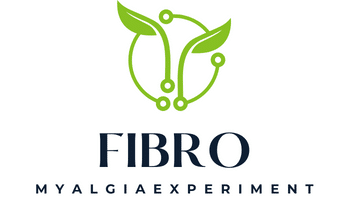In the midst of the 2024 digital revolution, cutting-edge technology is reshaping the landscape of various sectors, including healthcare. One promising advancement is the integration of 5G technology with drones. This potent union is forecasted to revolutionize medical supply delivery, particularly during crises. So, what exactly is the potential of 5G-enabled drones for emergency medical supply delivery? In this article, we dive into the prospects and challenges of this innovative technology.
5G Technology and Drones: A Dynamic Duo
Just as a good scholar requires a smart network of resources, so does advanced technology depend on robust data networks for optimal performance. 5G technology, the fifth generation of mobile networks, takes the network capabilities to new heights, offering faster speeds, lower latency, and increased capacity. These features make it an ideal partner for drone technology.
A découvrir également : What’s the Impact of Virtual Reality on Treating Chronic Pain Without Drugs?
Drones, also known as unmanned aerial vehicles (UAVs), are no longer just for hobbyists or the military. They have gained significant traction in various sectors including agriculture, real estate, and notably, healthcare. One key area where drones are making a remarkable difference is in the delivery of medical supplies. Equipping drones with 5G technology can dramatically enhance their efficiency and effectiveness, particularly in times of emergencies.
The Potential of 5G-Enabled Drones in Healthcare
Imagine a scenario where a patient in a remote or disaster-stricken area needs urgent medical supplies. Traditional methods of delivery could take hours or even days. With a 5G-enabled drone, the same delivery could be made in a fraction of the time.
A lire également : What Are the Latest Developments in High-Speed Train Connectivity for UK Commuters?
5G networks enable drones to transmit large amounts of data instantaneously. This allows for real-time monitoring of the drone’s flight path and immediate adjustment in case of obstacles or changes in weather conditions. Moreover, 5G’s low latency ensures the drone responds instantly to commands, reducing the risk of accidents and ensuring safe delivery of supplies.
Furthermore, the large capacity of 5G networks means that multiple drones can be in the air at the same time. This could be invaluable in mass casualty incidents where many patients require immediate medical attention.
Challenges in Implementing 5G-Enabled Drone Delivery
Despite the promising future of 5G-enabled drone delivery in healthcare, several obstacles need to be surmounted. Regulatory hurdles are one of the main challenges. Currently, drones are subject to flight restrictions such as line-of-sight regulations, which require the drone operator to maintain visual contact with the drone at all times. With 5G technology, drones can fly beyond the line of sight and still be controlled reliably. Therefore, regulations will have to evolve to accommodate these technological advancements.
Security and privacy are other major concerns. The mass collection and transmission of data by drones, particularly in sensitive areas like healthcare, requires stringent measures to protect patient confidentiality and prevent data breaches.
Finally, the infrastructure required to support 5G technology is still not widespread. Even in areas where 5G networks are available, stable and continuous coverage may be an issue, especially in remote locations.
The Role of Crossref in Promoting 5G-Enabled Drones
The role of platforms like Crossref is crucial in the development and acceptability of 5G-enabled drones. Crossref, a scholarly linking network, can facilitate researchers globally to share their findings, advancements, and challenges related to this technology. Through open and collaborative efforts, solutions to the technical, regulatory, and security issues can be found.
Crossref can also help to track the impact of research on 5G-enabled drones in healthcare. By monitoring citations of related research articles, Crossref can provide insights into the reach and influence of the research, thereby helping to shape future studies and technological developments.
Preparing for the Future of 5G-Enabled Drone Delivery
There is no doubt that 5G-enabled drones hold immense potential in transforming the delivery of medical supplies during emergencies. This technology could significantly improve patient outcomes, particularly those in remote or disaster-stricken areas, by ensuring timely delivery of medical aid.
However, realizing this potential involves overcoming significant hurdles. It requires collaboration among various stakeholders – drone manufacturers, healthcare providers, regulatory bodies, and scholars. It also necessitates robust technological infrastructure and effective security measures.
As we gaze into the future, we should remember that technological advancements and their successful integration into our lives are not instantaneous events but gradual processes. For now, we continue to explore the possibilities of 5G-enabled drones in healthcare delivery, imbued with optimism about the technological leaps that lie ahead.
The Fusion of 5G-Enabled Drones and Healthcare
An exciting space where 5G technology and drone delivery converge is the healthcare sector. Drones have the potential to revolutionize the delivery of medical supplies, from routine medication refills to emergency medical equipment, and even organs for transplantation. This potential increases exponentially when these drones are enhanced with 5G connectivity.
5G-enabled drones bring with them the promise of real-time data transmission, which is critical for emergency response. The ability to monitor the drone’s progress in real-time, adjust its flight path on the fly, and receive instant feedback can make the difference between life and death in an emergency situation.
Additionally, drones equipped with 5G technology can accommodate various health care technologies such as wearable devices, artificial intelligence (AI), and the Internet of Things (IoT). For instance, 5G drones can transport wearable devices that monitor patients’ vital signs in real time. They can also carry AI-powered medical equipment that can assist in diagnosing and treating patients remotely.
The integration of 5G technology with drone delivery can also enhance public safety in healthcare. With low latency, 5G drones can respond swiftly to emergencies, reducing response time and potentially saving lives.
How 5G-Enabled Drones are Shaping the Future of Emergency Medical Delivery
Imagine a scenario where an earthquake has struck a remote area, causing numerous injuries and making conventional roads impassable. 5G-enabled drones can rise to the challenge, delivering emergency medical supplies with astounding speed and precision.
Using private networks and location data, these drones can bypass traditional delivery routes, overcoming roadblocks, traffic, and other obstacles. The fusion of drone technology and 5G connectivity allows healthcare providers to deliver medical supplies in real time, ensuring urgent care is provided swiftly and efficiently.
Moreover, 5G-enabled drones are not limited to one-at-a-time delivery. With the large capacity of 5G networks, a fleet of drones can be in the air simultaneously, each ferrying critical medical supplies to different parts of the disaster-stricken area.
Conclusion: Harnessing the Power of 5G-Enabled Drones for Healthcare
In conclusion, the possibilities of 5G-enabled drones in healthcare are immense and far-reaching. From increasing the efficiency of routine medical supply delivery to potentially saving lives during emergencies, the impact of this technology cannot be overstated.
However, realizing the full potential of 5G-enabled drones for emergency medical supply delivery requires overcoming several hurdles. These include regulatory changes, security and privacy concerns, as well as the expansion of reliable 5G infrastructure. Platforms like Crossref can play a vital role in fostering collaboration among various stakeholders and promoting research in this field.
As we continue to explore the potential of 5G-enabled drones, it’s important to stay grounded in the reality of the current state of technology and infrastructure. Nevertheless, the future of healthcare delivery appears promising with the dawn of 5G-enabled drones, and we look forward to the life-saving changes they promise to bring.






